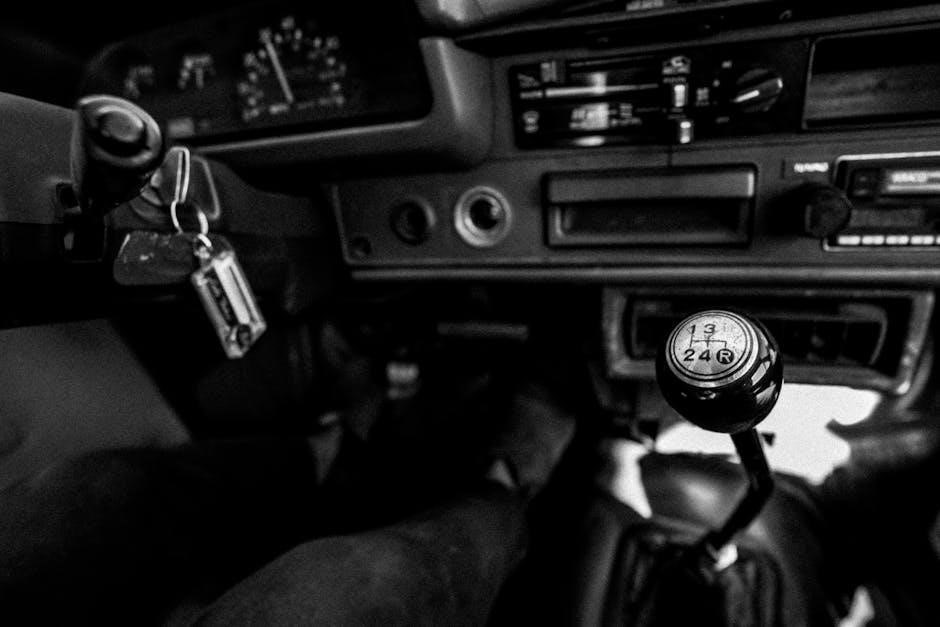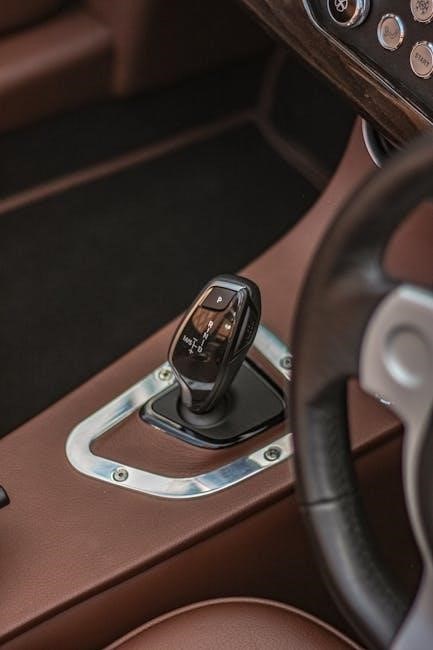Manual Transmission AMG: A Comprehensive Overview
The topic of manual transmissions in AMG vehicles sparks considerable interest given AMG’s performance legacy. While not commonly associated, the discussion explores historical connections, potential future options, and the broader context of manual availability within Mercedes-Benz and related performance models like the Aston Martin Vantage AMR.
The presence of manual transmissions in AMG vehicles is a topic steeped in both historical context and modern automotive trends. While AMG is predominantly known for its high-performance automatic and dual-clutch transmissions, the notion of a manual option evokes a sense of purist driving engagement. This introduction explores the limited availability and historical rarity of manual transmissions in AMG models, contrasting it with the brand’s overall focus on advanced automatic systems like the AMG SpeedShift.
The discussion also touches upon the reasons behind the scarcity of manual AMG cars, including customer preferences leaning towards automatic transmissions and the performance benefits offered by modern automatic systems. Furthermore, we examine instances where manual transmissions have been considered or implemented in vehicles sharing components with AMG, such as the Aston Martin Vantage AMR, which utilizes an AMG-sourced engine paired with a manual gearbox. This provides a contrasting perspective and raises questions about the potential for future manual offerings within the AMG lineup.
Historical Significance of Manual Transmissions in Mercedes-Benz
Mercedes-Benz boasts a rich and extensive history with manual transmissions, dating back to the early 20th century. For many decades, manual gearboxes were a staple in their vehicle lineup, including both mainstream models and performance-oriented cars. Iconic vehicles like the 300 SL Gullwing, while renowned for its innovative design, also offered a manual transmission, catering to drivers who sought a more engaging driving experience.
Throughout the years, Mercedes-Benz continued to offer manual options in various models, including sedans, coupes, and convertibles. While AMG-specific models rarely featured manuals, the availability of manual transmissions in standard Mercedes-Benz vehicles highlights the brand’s historical commitment to providing drivers with a choice. This legacy underscores the significance of manual transmissions in shaping the brand’s identity and catering to a diverse range of driving preferences. Although automatic transmissions have become increasingly prevalent in modern Mercedes-Benz vehicles, the historical presence of manuals serves as a reminder of the brand’s deep-rooted connection to driver engagement and traditional automotive engineering.
Current Availability of Manual Transmissions in Mercedes-Benz Models

In the contemporary Mercedes-Benz lineup, the availability of manual transmissions is becoming increasingly limited. The trend across the automotive industry leans towards automatic and dual-clutch transmissions due to their efficiency and performance advantages. As of today, February 7, 2025, manual transmissions are primarily found in specific configurations of the A-Class, B-Class, and CLA models, particularly those equipped with the 1.33-liter gasoline engine developed in collaboration with Renault.

These models offer a choice between 109, 136, or 163 horsepower, providing a more traditional driving experience. However, it’s important to note that even within these models, the availability of manual transmissions may vary depending on the specific market and trim level. For AMG models and the EQ electric range, manual transmissions are not offered; instead, these vehicles are equipped with dual-clutch automatic transmissions or torque converter transmissions. Mercedes-Benz is phasing out manual transmissions from its vehicles, signaling a shift towards more automated driving solutions. The future availability of manual transmissions in Mercedes-Benz models remains uncertain, as the brand continues to prioritize performance and efficiency through advanced automatic transmission technologies.
AMG SpeedShift Transmission: Features and Availability
The AMG SpeedShift transmission represents a pinnacle of performance-oriented automatic transmission technology developed by Mercedes-AMG. Designed to deliver lightning-fast gear changes and enhanced driving dynamics, SpeedShift is a hallmark of AMG vehicles, contributing to their signature responsiveness and acceleration. This advanced transmission system incorporates lightweight materials and close gear ratios, optimizing power delivery and ensuring seamless transitions between gears.
While not a manual transmission, SpeedShift offers drivers a high degree of control through paddle shifters mounted on the steering wheel, allowing for manual gear selection and a more engaging driving experience. Initially available on models such as the C32 AMG, SLK32 AMG, and later the SL55 AMG, CL55 AMG, and CLK55 AMG Coupe, the AMG SpeedShift transmission has evolved over the years, incorporating advanced features like multiple driving modes and adaptive shift logic. As AMG continues to push the boundaries of performance, the SpeedShift transmission remains a key component in delivering exhilarating driving experiences across its model range. Although manual transmissions are rare in AMG vehicles, SpeedShift provides a compelling alternative that balances performance and convenience.
Reasons for the Limited Availability of Manual Transmissions in AMG Models
The limited availability of manual transmissions in AMG models stems from a confluence of factors, primarily centered around customer demand, performance considerations, and technological advancements. Market research indicates that a significant majority of AMG customers prefer automatic transmissions, even if manual options were available. This preference is driven by the convenience and ease of use offered by automatics, particularly in everyday driving scenarios.
Moreover, modern automatic transmissions, such as AMG’s SpeedShift, provide faster and more precise gear changes than most drivers can achieve with a manual, leading to improved acceleration and overall performance. The increasing complexity of modern engines and drivetrain technologies also makes integrating manual transmissions more challenging and costly. As AMG focuses on delivering cutting-edge performance and catering to the preferences of its customer base, the emphasis has shifted towards advanced automatic transmissions, relegating manual options to a niche market. While some enthusiasts may lament the decline of manuals, the reality is that they no longer align with the broader market trends and performance demands of the AMG brand.

Customer Preference: Automatic vs. Manual Transmissions in AMG Vehicles
Customer preference plays a pivotal role in shaping the availability of manual transmissions in AMG vehicles. Extensive research consistently demonstrates that a vast majority of AMG buyers opt for automatic transmissions over their manual counterparts. This preference is largely attributed to the convenience and ease of use that automatics offer, particularly in the context of daily driving. Modern automatic transmissions, equipped with advanced features like paddle shifters and adaptive shift programs, provide a seamless and engaging driving experience without the need for manual clutch operation.
Furthermore, advancements in automatic transmission technology have resulted in faster and more precise gear changes compared to traditional manuals, contributing to enhanced acceleration and overall performance. While a dedicated group of enthusiasts still appreciate the visceral engagement of a manual transmission, their numbers are insufficient to justify the significant investment required to develop and offer manual options across the AMG model range. Consequently, AMG prioritizes catering to the broader market demand for automatic transmissions, ensuring that its vehicles deliver the performance and driving experience that most customers desire.

Aston Martin Vantage AMR: A Manual Transmission Alternative with AMG Engine
The Aston Martin Vantage AMR presents an intriguing alternative for enthusiasts seeking a manual transmission paired with an AMG-derived engine. The Vantage AMR features the same twin-turbo 4.0-liter V8 engine found in various AMG models, but crucially, it is offered with a seven-speed manual transaxle sourced from Graziano. This combination provides a unique driving experience, blending the raw power of the AMG engine with the engaging control of a manual gearbox. The availability of a manual in the Vantage AMR highlights the potential for such configurations, even as AMG itself largely moves away from manual options.
The decision by Aston Martin to offer a manual in the Vantage AMR underscores the appeal of manual transmissions to a specific segment of performance car buyers. For those who prioritize driver involvement and a direct connection to the car, the manual gearbox remains a highly desirable feature. While AMG focuses on automatic transmissions to cater to a broader audience, the Vantage AMR serves as a reminder of the excitement and satisfaction that a manual transmission can deliver, especially when coupled with a potent AMG engine.
European Auto Group’s Manual Transmission Swap Project for AMG GT
European Auto Group (EAG) is undertaking an ambitious project: a manual transmission swap for the Mercedes-AMG GT. Known for their unique transmission swap endeavors, EAG aims to inject the engaging experience of a manual gearbox into the AMG GT platform. This endeavor addresses the desire of some enthusiasts for a more involved driving experience not currently offered by AMG’s factory configurations. While challenging, the project has garnered significant attention within the automotive community, with many closely monitoring the progress and potential outcome.
The manual transmission swap for the AMG GT is not a straightforward task. It requires extensive engineering modifications, including adapting the transmission to the AMG GT’s engine and drivetrain, integrating the clutch and shifter mechanisms, and ensuring proper electronic control and compatibility. EAG’s experience with similar projects positions them as a capable entity to tackle this endeavor. If successful, this conversion would provide a unique offering for AMG enthusiasts seeking a rare blend of AMG performance and manual driving engagement. The project highlights the enduring appeal of manual transmissions, even in modern performance cars.
Manual Transmission Options in Other Mercedes-Benz Models (A-Class, B-Class, CLA)
While manual transmissions are increasingly rare in the Mercedes-Benz lineup, they have been available in some models, particularly the A-Class, B-Class, and CLA. These models, primarily offered in the European market, sometimes feature manual gearbox options, often paired with smaller displacement engines. The availability of manual transmissions in these models caters to a segment of drivers who prefer greater control and engagement.
Specifically, the manual transmission has been combined with the 1.33-liter gasoline engine, which is co-developed with Renault. This engine offers various power outputs in the A-Class, B-Class, and CLA/CLA Shooting Brake models. However, it is important to note that Mercedes-Benz has been phasing out manual transmissions. The long-term availability of these options is uncertain. The trend suggests that manual transmissions in these models may eventually be discontinued as Mercedes-Benz shifts towards automatic and electrified powertrains. Despite this, the existence of manual options in these models provides a niche offering for a specific customer base seeking a more traditional driving experience.
Future of Manual Transmissions in Mercedes-Benz
The future of manual transmissions within Mercedes-Benz, particularly in AMG models, appears increasingly limited. The automotive industry is undergoing a significant shift towards automatic transmissions, dual-clutch systems, and electric powertrains. These modern technologies often offer superior performance, fuel efficiency, and ease of use compared to traditional manual gearboxes. As Mercedes-Benz invests heavily in electric vehicle development and advanced driver-assistance systems, the demand and production of manual transmissions are expected to decline further.
Several factors contribute to this trend. Customer preference leans towards automatic transmissions, even among performance enthusiasts. The increasing complexity of modern engines and vehicle systems makes integrating manual transmissions more challenging and costly. Regulatory pressures, such as emissions standards, also incentivize manufacturers to adopt more efficient and technologically advanced transmission options. While a small niche of driving purists may still desire manual transmissions, the overall market demand is insufficient to justify their continued development and integration across the Mercedes-Benz range, especially in high-performance AMG models. Therefore, the future likely holds very few, if any, new Mercedes-Benz models equipped with manual gearboxes.
The manual transmission, while holding a significant place in automotive history, faces an uncertain future within AMG’s lineup. Historically, Mercedes-Benz produced performance cars with manual transmissions, contributing to AMG’s heritage of driver-focused vehicles. However, current trends and technological advancements point towards a diminished role for manual gearboxes in the brand’s future.
The shift towards automatic and dual-clutch transmissions reflects a broader industry move towards enhanced performance, efficiency, and broader market appeal. While some enthusiasts lament the potential loss of manual transmissions, the reality is that customer preferences and regulatory demands are driving this change. As AMG embraces electric powertrains and advanced technologies, the manual transmission’s relevance diminishes further. While its historical significance remains undeniable, the manual transmission is unlikely to play a significant role in shaping AMG’s future. The focus will likely remain on delivering high-performance vehicles through technologically advanced automatic systems.